By FELICITY DARVILLE
When I was a youngster attending Temple Christian Primary School, I had an art teacher that sparked an interest and creativity in me that has stuck with me throughout life. Because of the foundation that Moya Strachan laid with her students in art, many of them still use their creativity in some way, no matter what professional field they engage in. She made you see art as a natural extension of yourself; something that everyone can do. I have created arts and crafts throughout my life, and I have had the opportunity to display and sell my pieces through the Bahamas Agricultural and Industrial Corporation (BAIC) and the Ministry of Tourism. Recently, I took up a six week art course with Moya Strachan and Pauline Baker. As I reconnected with my childhood teacher, she shared her great desire to see Bahamian art and culture elevated and expanded nationally.
“I would like to see the creation of a Bahamas National Arts Center, one that promotes the art and the culture of our people,” she shared.
“The Bahamas National Arts Center would have, of course, a theatre, an fine arts museum, and dance, music, drama, writing, film, culinary and visual arts schools.
“Dance studios, music studios and art studios will be housed. Students training in high school and university students, including those returning from abroad would be able to put on performances for Bahamian and international audiences. I would also like to see more cultural performances and bands back in the hotels, as well as more Bahamian produced movies and programmes on television.”
She remembers venues and events that actively promoted Bahamian culture such as the Drum Beat Club, The King and Knights Club, Goombay Festival, Jumbey Village, The Drop Off, Count Bernadino’s club, The Family Island Lounge, The Dundas Centre for the Performing Arts. There were many places to enjoy a Bahamian live band and artists, such as Blind Blake, The Falcons, Kenny and the Beach Boys, Ronnie Butler and the Ramblers, Tony Seymour, Ezra and the Polka Dots, the Deep Changer, The Soulful Groovers, KB and the Sweet Sensations, Jay Mitchell, Bahamen, Visage and Ambassah. Junkanoo, she added, is one of our biggest outward, traditional, artistic expressions of Bahamian culture in music, dance, art and performance which must be cherished and preserved.
There were days when Bahamian pride was strong and the culture was prized but now, as a teacher, Moya finds that students often ask her, ‘What exactly is Bahamian culture?’
“I would then have to explain that culture is the way we live, our music, our art, the way we speak, how we dress, our religious beliefs, what we eat and what we do generally as a people,” she told me.
“As an art educator for over three decades, it has been my mandate to promote Bahamian culture to my students. I shared stories of my life and Bahamian history. I believe in empowering students with the skills needed to become innovative creators themselves. One of the first things I have them realize is that God is the greatest Artist and He has blessed them with such an awesome creative mind and environment so they could become an artist too.”
Over the course of 35 years, she has taught at Temple Christian Schools, Xavier’s Lower School, LN Coakley High School, DW Davis, CI Gibson High School. She is currently teaching at Queen’s College. She notes that the country is filled with “truly super-talented, creative, innovative, and artistic students. However, support from the parents, Bahamian public, and the government to promote our culture is minimal, she said. Moya has hosted art exhibitions for her students where the parents hardly came out to see their own child’s work. As the coordinator of the National Family Island Regatta Art Exhibition one year, she recalls approaching a government official with an invitation to come and view the work on display by the kids all over Exuma, and the invitation was refused.
“Moving forward as a nation, we have to make a commitment to preserve our culture and instill in our kids the importance of understanding what truly makes us Bahamian,” she advised.
“Tell the children the stories of our past. Share with them the skills and knowledge that our ancestors have passed on. Let them not be made ashamed of what we eat, our music, our ways, our speech and the glorious beauty of our islands. We are truly blessed!”
Moya told me of childhood days that were times that helped to shape children in national pride and Bahamian identity. She grew up in the Farrington Road area. As I interview people who were raised in this area, as well as Chippingham, Nassau Street, and Bain and Grants Towns, I often hear them recall their childhood days fondly, with similar activities that brought children together as they spent more time outside than inside.
She was the fourth child of Joyce and Fred Strachan (her father is deceased). She grew up in their home on Farrington Road directly behind Carol’s Food Store with her siblings Gail, Gregory, Janey and Huey.
“Farrington Road had many happy childhood memories for me, playing with my friends, listening to music, and dancing and making and inventing stuff were always my childhood joys,” she recalled.
“I played rounders in the streets and I loved to climb the big dilly tree in our front yard. I played hopscotch, ring play, and I loved to shoot marbles in the dirt. I played jacks and sevens, and making paper dolls were some of my favorite pastimes. I was always imaginative and creative. In our spare time I was never bored. We ate fruits from the neighbourhood as they came into season, like guinep, tamarind, juju, coconut, sugar apple, soursop, hog plum, seagrapes, coco plum, cherries and more. I constructed houses out of old boxes to play in, and crocheted and knitted doll clothes out of socks and pieces of cloth. My friends on my street were a huge part of all the excitement of living in Farrington Road. They were always fun and innovative. The boys made cars from old wheels and discarded pieces of wood, and they used a rim and a wire hanger to make a rolling toy to race in the street. We all skated and rode bikes. We also made nets and caught tadpoles and went fishing. We were a real example of a typical “Bahamian community”. When our car moved out the yard to go we as kids, we always saw to it that our friends went, too. The same went for going to the beach with Mrs Johnson. She had to fill her car with the neighbours’ kids too. We had lots of happy times... and then there were some solemn, tragic events that are very memorable to this day.
“One of the biggest events in Farrington Road as a community back then was the fire at Carol’s Foodstore. We were happy that our home was not burned because we lived so close. Despite the fact that the burning of Carol’s Foodstore was tragic, as a community it united us too. There, we collected Coca Cola covers to go to the movies together, walked through Big Pond to go to Jumbey Village as a group, woke up in the very early morning to march with my cousins to take costumes to Junkanoo and then rushed all the way back home with them. I also remember walking to church on Sunday mornings to St Joseph’s Catholic Church; it was also a time to greet and walk with another set of friends and family that shared our faith.”
She attended the Cathedral School Downtown, Nassau, which later became St John’s Preparatory School. By the time she was ten years old, Moya and her family moved to a new homestead in Joan’s Heights, South Beach. When it was time for high school, Moya was able to go to her ‘dream school’ St Augustine’s College, where her elder siblings had gone.
“The great SAC... I had finally got an opportunity to be a student at such a great institution,” she mused.
“Yes, it was everything a high school should be! There in the 8th grade, I decided I wanted to be an art teacher. In grade 8 I painted two horses that my art teacher, Mrs Pauline Barker, thought was so great, it was placed on display for the school’s anniversary on Paradise Island. At St Augustine’s College, I choreographed skits and performed them, I played netball, field hockey, volleyball and participated in various clubs.
Every day at school was exciting. We had awesome teachers and a super principal, Mr Leviticus Adderley, who spent some evenings dropping home students in his car after a game. A man I would always admire, kind, stern, caring and a person who leads by being an example.”
Another male authority figure in her life became her mentor that helped to shape her character: “Deacon Peter Rahming of the Church of the Resurrection was a real mentor to me. He exemplified the example of a Godly man. As for churches, South Beach gave me the opportunity to visit and attend many other churches, Baptist Bible, Church of God of Prophecy with the Musgroves, Calvary Bible with Jack and Audrey Adams, missionaries from Joy Bible and many others, too many to mention. In Joan’s Heights we became close friends with a lot of our neighbours. Joy Bible Mission played a crucial role in my life. At Joy Bible I was a Camp Counselor and Sunday School Teacher. Audrey and Jack Adams had a great influence on my Christian growth with the many Bible studies that were held at camp. I became a Christian at age 11 at Baptist Bible. I went up for a few altar calls then I finally came to the realization that I was truly saved. I acquired that faith in believing that once you were in the palms of God’s hands, no power on Earth could possibly take you out, not even me myself.”
After graduating from St. Augustine’s, Moya attended Abilene Christian University where she received a Bachelor’s degree in Fine Arts. Years later, she would also achieve her Diploma in Education from the College of The Bahamas. In addition to teaching, Moya was involved in many other facets of art and culture. She was make-up consultant with Aloette, and the Director of Model Management Modelling Agency, founded by Byron Coley and Florence Angole. She travelled with models to various Family Islands to put on fashion shows. As an agency they modelled weekly Androsia at The British Colonial Hotel, The Grand Hotel, The Ambassador Beach Hotel, The Ministry of Tourism Tea Parties at Government House, The Ocean Club and The Balmoral Hotel. She was Chairman of Exuma Junkanoo Committee, A Member of the National Family Island Regatta Committee, Player/Coach of the Exuma Netball Team for the Bahamas Games, President of Yuma Arts Exuma, President of the Art Educators of the Bahamas and organizer of the Art Educator’s Exhibition “Kaleidoscope”.
She has also worked with some of the top fashion designers of the Bahamas such as Jeffery Taylor, Shane Rolle, Bryan Sherman, Jeffery St John, Brynda Knowles, Rachel Garcia, Hal Taylor, Sabrina Francis, Percy Wallace, Judy Deleveaux and many others with the Quality Fabrics Designer of the year show.
As an artist, Moya creates paintings of the natural beauty of the Bahamian environment – the flora and fauna, the vast animal life of our sea, air and land and aspects of the culture of our Bahamian people. Her work has been on display in many art exhibitions over the years. The two annual exhibitions she was always a part of include the Wine and Art Festival at the Bahamas National Trust in the fall and the Art and Wine event that was held at the Poop Deck West in the spring. The Art and Wine event was discontinued, unfortunately, but she still exhibits with the National Trust.
“Transforming Spaces is a fantastic, successful annual event where many of our artists participate, which gives them a stage to showcase Bahamian art - not just locally but also globally,” she said.
“As an artist and art educator, I am still at the view that our Bahamian art could be even more visible. The Central Bank of the Bahamas, The National Art Gallery of the Bahamas, RBC Finco, and numerous liquor stores have supported the arts in the Bahamas in many ways over the years. I am always happy to see the many other galleries that have been promoting the visual arts in the Bahamas.”
With the establishment of a Bahamas National Arts Centre, she said, Bahamians could make an even greater impact around the world, as we see them doing, once given the opportunity, in so many other aspects of life.
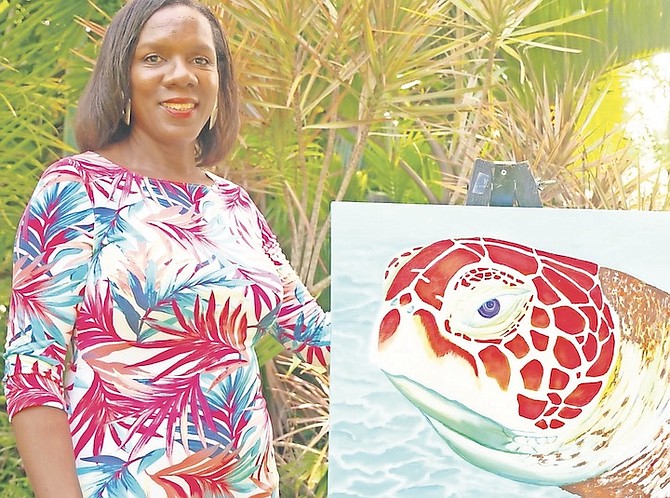
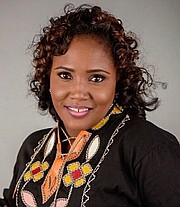
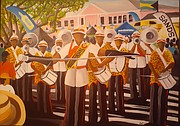
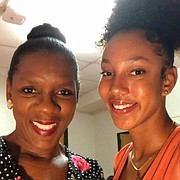
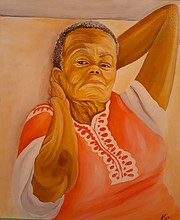




Comments
Use the comment form below to begin a discussion about this content.
Sign in to comment
Or login with:
OpenID